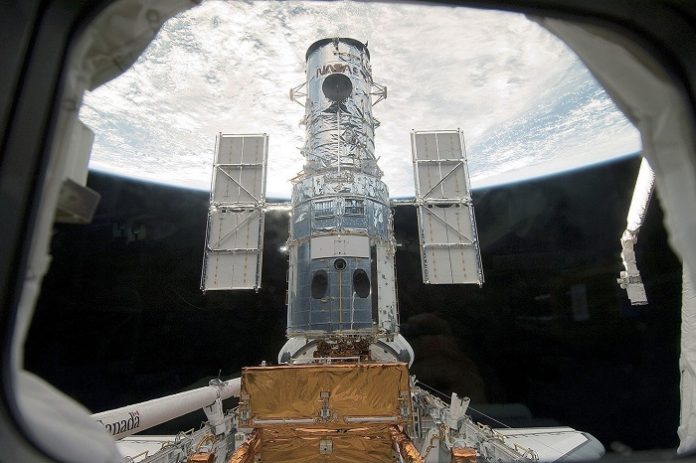The number of satellites circling the earth has skyrocketed in recent years. In 1959 the number was only two but today there are over three thousand active satellites, and that is just the beginning. Private companies are scrambling to conquer space at a rapid pace. SpaceX’s Starlink project alone has the permission to put 12000 satellites into orbit. In ten years times, there could be 16000 satellites in the orbit, 5 times as many as today.
Low price launch cost is one of the key drivers of this rush to the space. 25 years ago, payload cost per kilo was 22000 euros and today it costs only 1000 euros and these prices are expected to fall below 100 euros per kilo. No wonder then that more and more companies are looking above at the sky.
Data from space will be key to unlocking new technical innovations in the future. Navigation, communication, earth observation; more satellites are delivering ever more data. It is being said that every major industry will be affected by satellite data in the next 10 years.
Most of the data comes from underground cables, but half of the planet does not have access to the cables that provide reliable broadband. And, here comes satellites to turn the game around 360 degrees. There are three kinds of satellites broadly; High orbit satellite, low orbit satellite and cube satellite. High orbit satellites hover over the earth’s equator at around 36000 km. They are as big as a school bus size and cost huge bucks as well. Low orbit satellites are comparatively tenth to the size of high orbit satellites, cheaper to build and orbit at around 1000kms. And, then there are satellites that orbit even closer to earth; cube satellites. There are about the size of a milk jug and hover around 500kms over orbit and can be attached to multiple cube satellites like legos to multiply their power.
Each of these satellites can eventually compete with the underground cables. The high orbit satellites cast a really wide net of data, nearly the size of a continent-wide. However, they are high up, they have less data capacity making them not so great for commercial uses like gaming because they have lag time. On the other hand, low orbit and cube stats are closer, so they can provide faster speed like 5G and lower latency and that is what competes with cables back on planet earth.
Satellites are getting smaller and cheaper. The reason that satellites are getting smaller and starting a new revolution is that the barrier to entry into space is not that high anymore. Large satellites carrying a lot of instruments can increase the cost of payloads significantly. In contrast, if you can manage to make the satellite smaller, miniaturize the components, and take the advantage of the increase in efficiency then you can put something into orbit much faster. Giants weighing tons are turning into smart swarms that provides seamless data; the raw material of the future.
As the space industry experiences disruption not seen since the original space race of the 1960s, numerous companies are gearing up to provide space-based capabilities with new risk profiles, increased volumes, and decreased costs. Established businesses are adapting to take advantage of these opportunities.
Whether it’s high-throughput satellite (HTS) microwave payloads, or telemetry, tracking and control (TT&C), design and validation tools from Keysight provide greater assurance that your satellite and its subsystems work the first time, every time, for the duration of the mission.
For more on this, I was very fortunate to have a one on one conversation with Richard Soden, Space & Satellite Lead, Keysight Technologies. Excerpts:

ELE Times: Reduced launch costs and the advancement of reusable rockets drive today’s satellite industry revolution. How is Keysight ensuring its solution’s reliability against the thriving intentions of the space industry to minimize launch costs? Can this intention be a hindrance to a state-of-the-art satellite?
To support this industry, Keysight is focused on enabling companies to accelerate their technology deployment to space operation, while minimizing risk and assuring performance. You hear a lot about “shifting left” in the industry. This refers to getting things right early in the product lifecycle, and Keysight is enabling this not only through test and measurement hardware but also through our system design software. We enable the building of accurate system-level models including the orbital dynamics of LEO as well as the means to test and improve these models, capturing the real physics of operation. These models can be used as “Digital Twins” that enable parallel engineering teams to get ahead on development before complete hardware systems are available.
ELE Times: In the path to new satellite development, every step is crucial. How is Keysight leveraging its expertise for assurance to the space and satellite industry? What are your latest solutions regarding this spectrum?
The vast portfolio of solutions from Keysight Technologies covers the entire product development lifecycle and I previously mentioned our design software. Once we have components and subsystems to test, we can leverage the design models to generate and analyze realistic waveforms through our wideband signal generators and spectrum analyzers. We can even apply realistic channel distortion and Doppler at a hardware level. We also provide solutions for the power systems, including solar array simulation and electronic loads, to test PDCUs and provide realistic power for system tests. We then provide integrated production test solutions that leverage the learning through prototyping, as well as field test solutions including handheld integrated instruments.
The latest developments are related to how all these solutions work together to provide maximum return on investment. Because our solutions coexist, data acquired at every stage of development can be used to inform development decisions, accelerating the decision-making process while increasing confidence in operational performance.
ELE Times: As the push to higher frequencies and wider bandwidths advance satellite technologies, verifying performance becomes even more critical to mission success. What are the various products offered by Keysight that ensure effective satellite signalling and communication?
We are known for our range of wideband solutions in spectrum analysis as well as our wideband signal generators. Our VXG microwave signal generator offers the industry’s highest output power with ultra-low phase noise. We use these capabilities to test a range of RF components and satellite subsystems. We also use external sources with our vector network analyzer (VNA) products. Our team of experts developing the VNA products excel in pushing the capabilities of these instruments. Our modulation distortion software uses the external source to generate realistic operational wideband signals. In analysis, it extracts linear and non-linear distortion in our device under test (DUT) to measure NPR, ACPR, and even EVM without the need to demodulate the signal. This can have a huge impact on measurement time.
ELE Times: The space industry transformation by market and technology forces brings new opportunities for growth and new challenges. What are the current challenges you would like to identify for our readers with the space and satellite industry? What products and solutions offered by Keysight are the way out from those challenges from your standpoint?
The major challenge in the space and satellite industry today is the race to deploy technologies and implement novel business cases that leverage those technologies as quickly as possible while minimizing risks in operational performance. There is currently a gold rush happening in space. Though LEO is much more accessible, the costs of not meeting operational goals are still huge. Our approach to the industry is holistic and focuses on the data accumulated throughout the development and how that data is then used to make design choices or validate business assumptions.
ELE Times: What innovations are you planning next regarding this spectrum?
We continue to grow our solution portfolio to enable the Space and Satellite industry to meet its objectives. One area of interest to me is the electro-optic communication links. As the RF and microwave frequencies begin to get congested with satellite traffic, we will see much more use of optoelectronics to provide point-to-point communication. Testing those requires some additional instruments, sources, and measurement techniques.
Mayank Vashisht | Sub Editor | ELE Times







